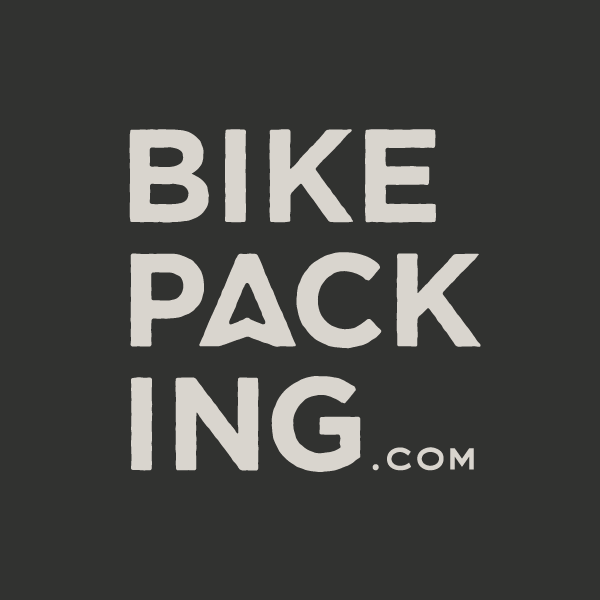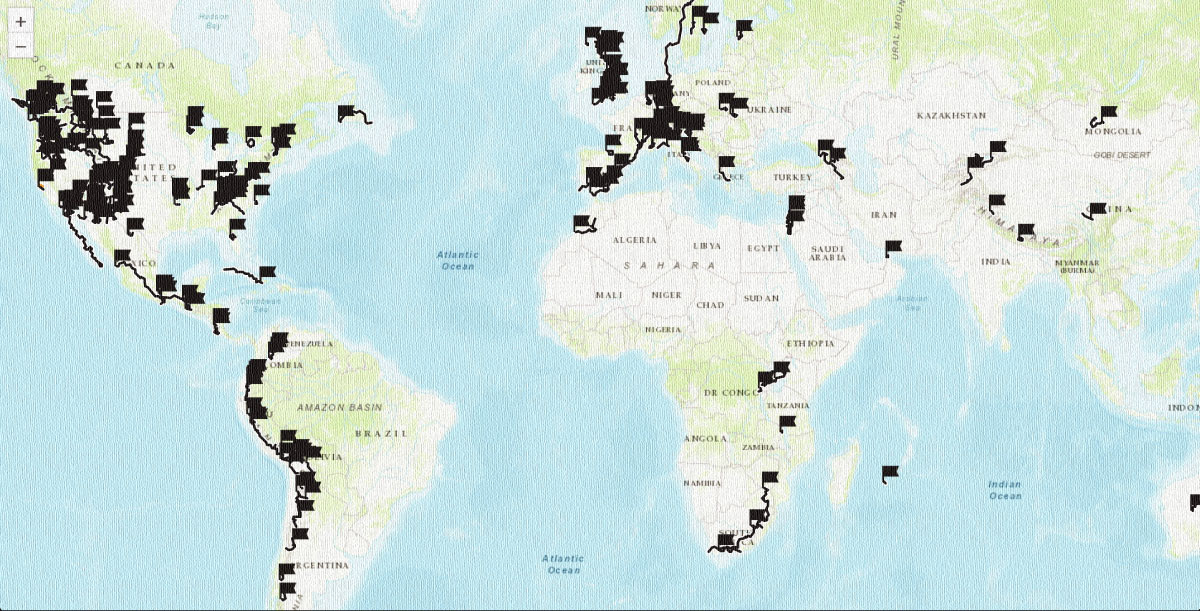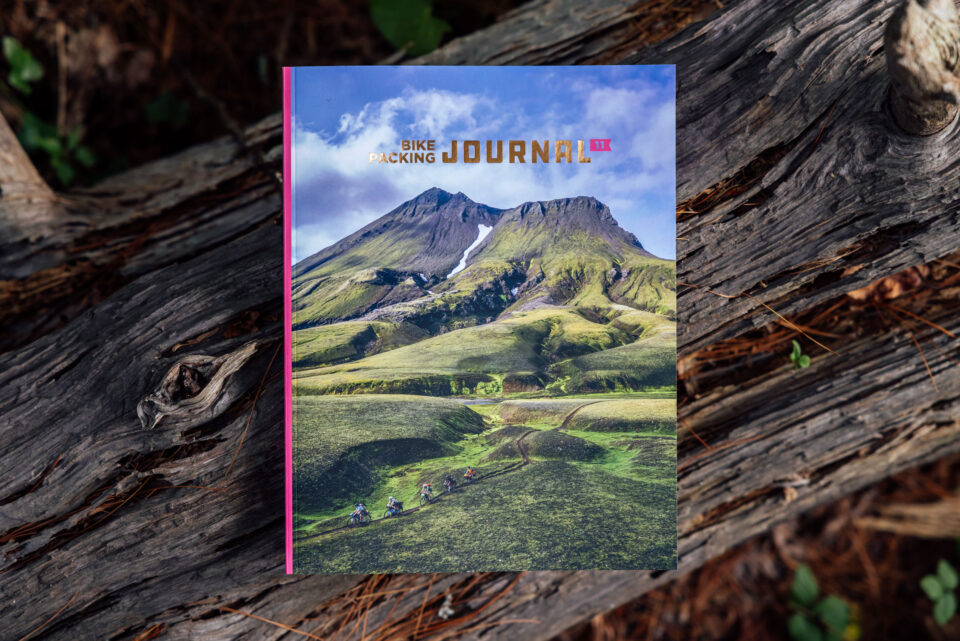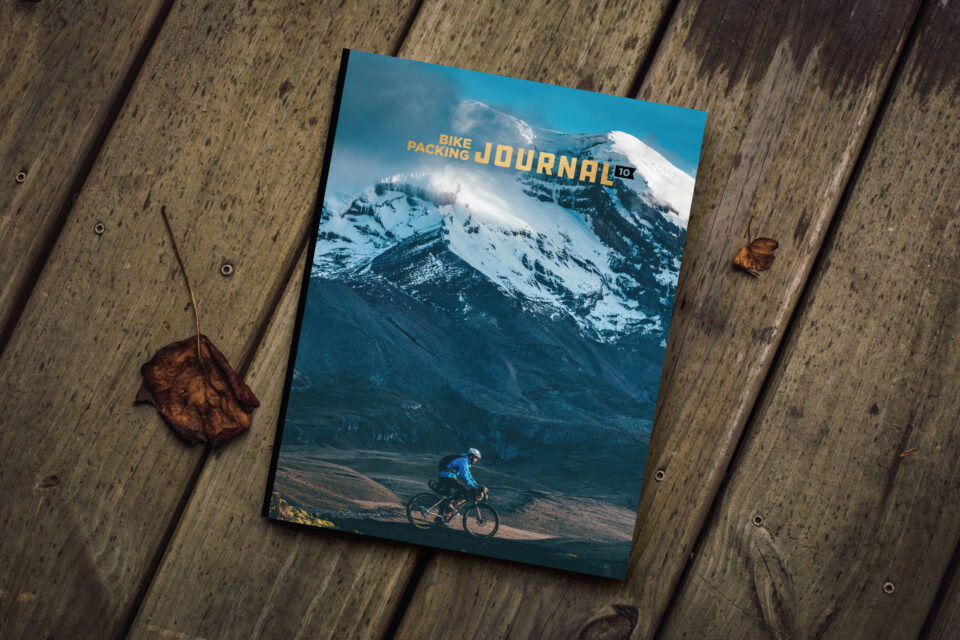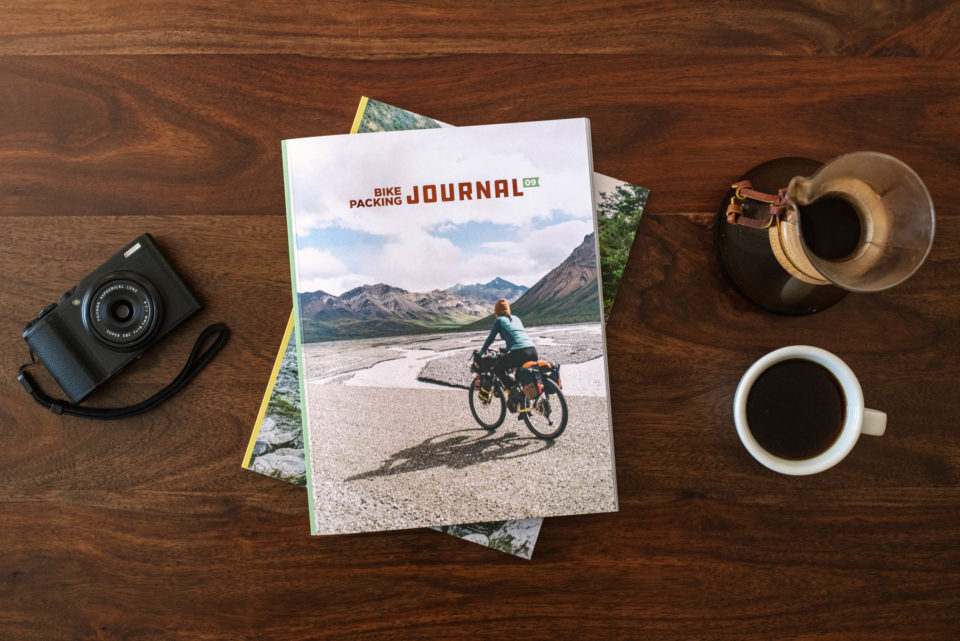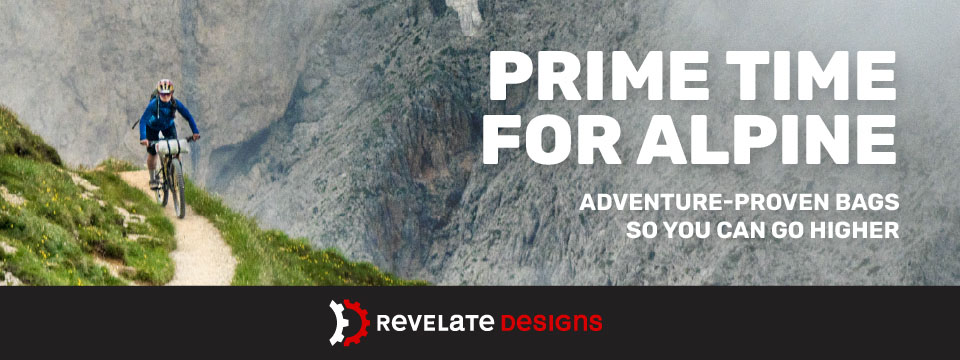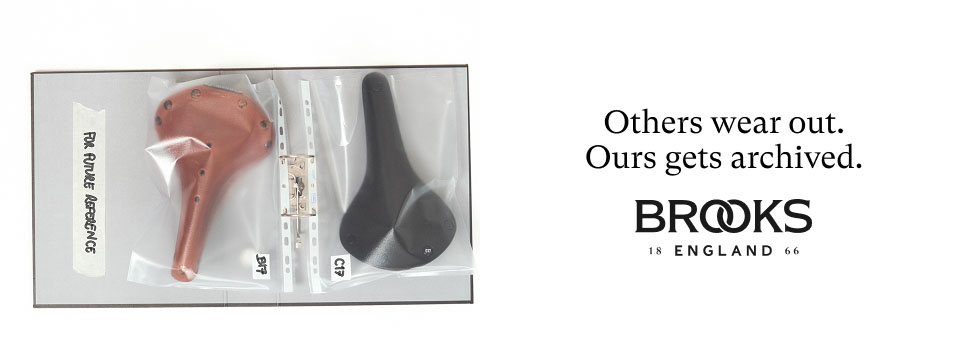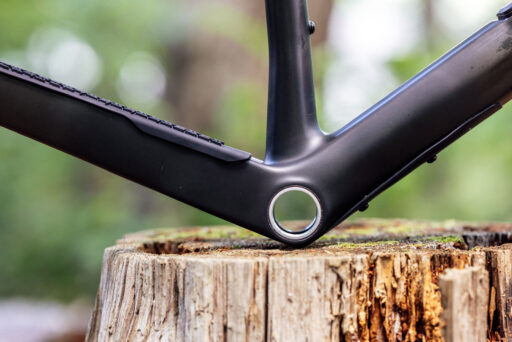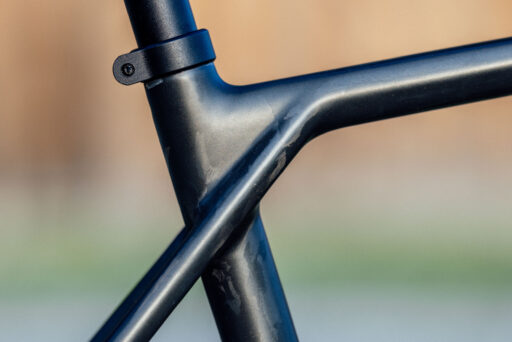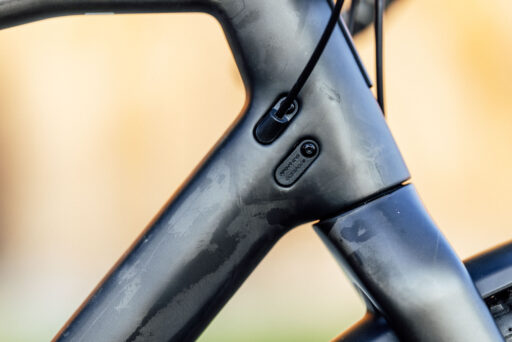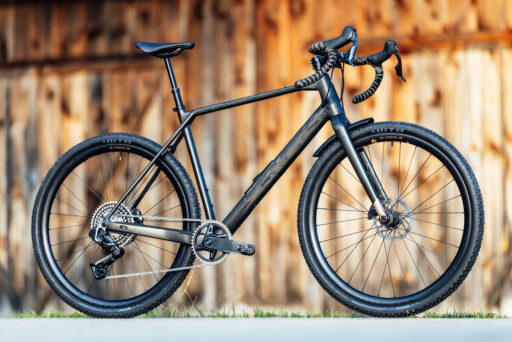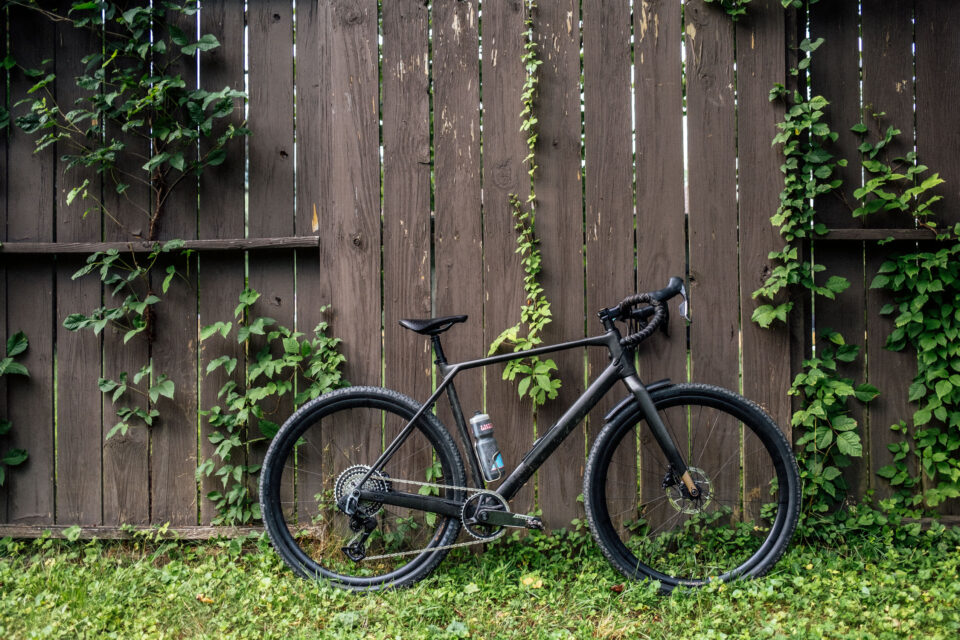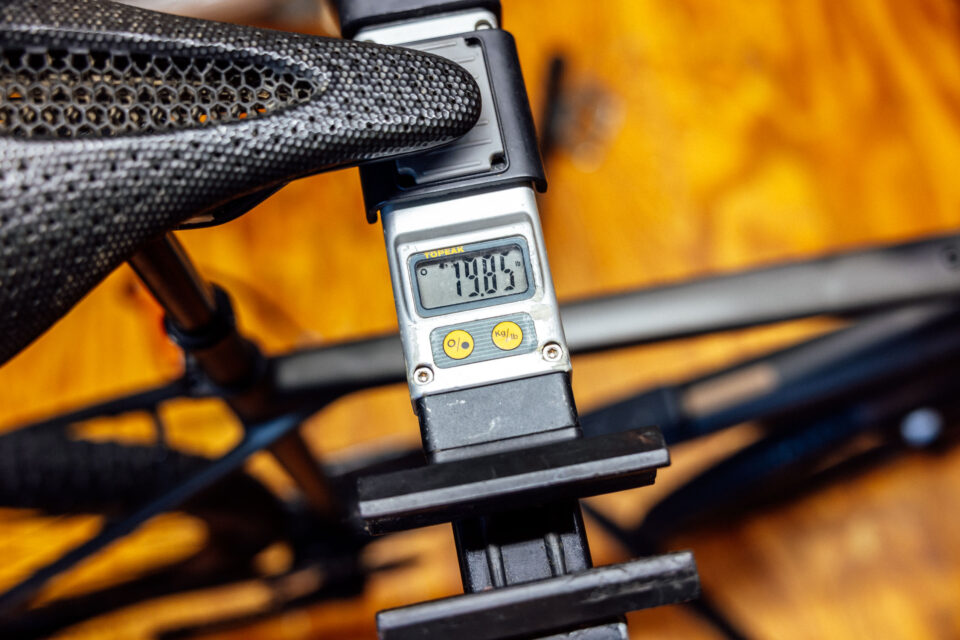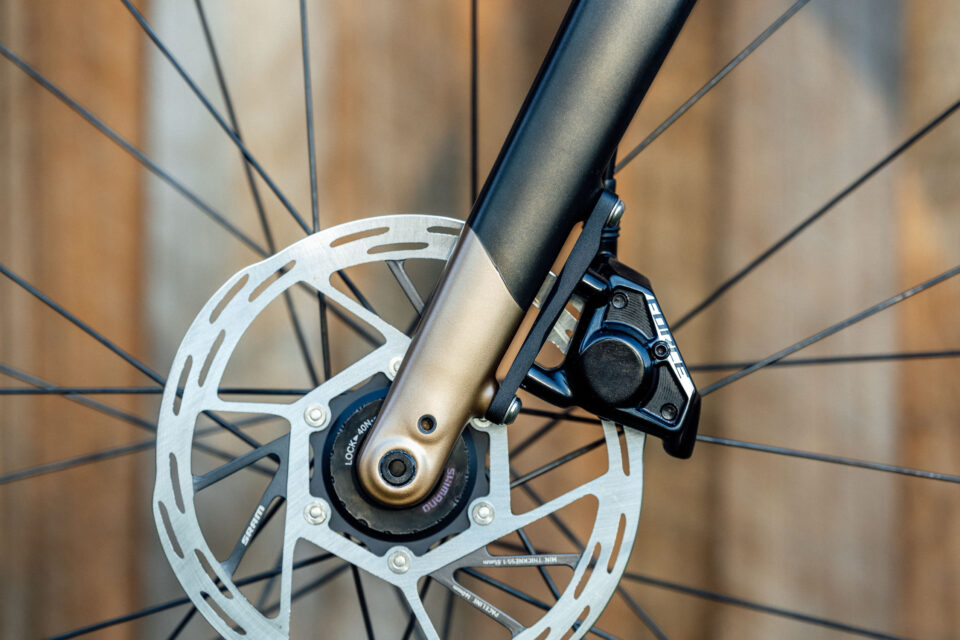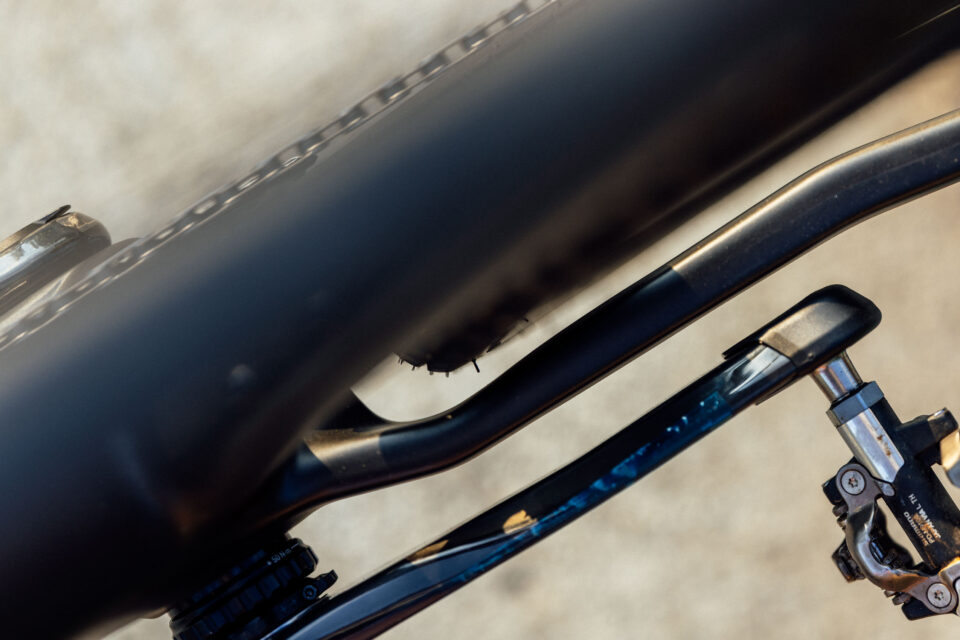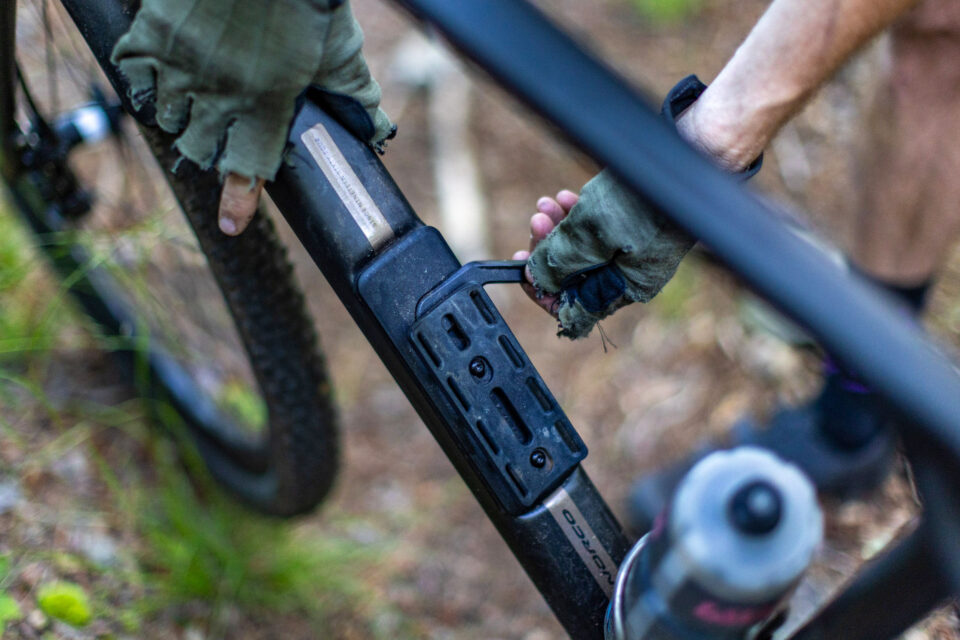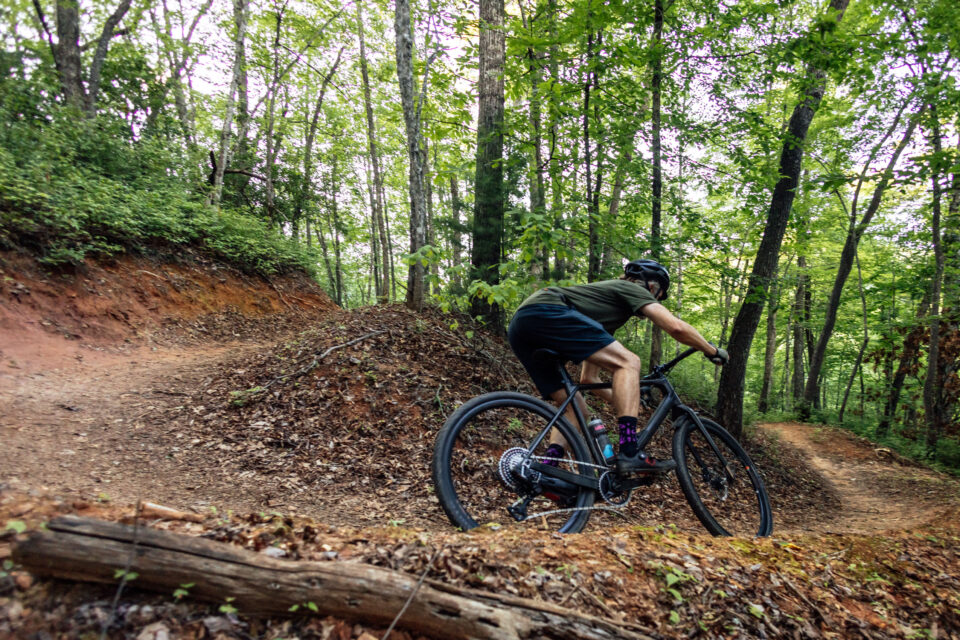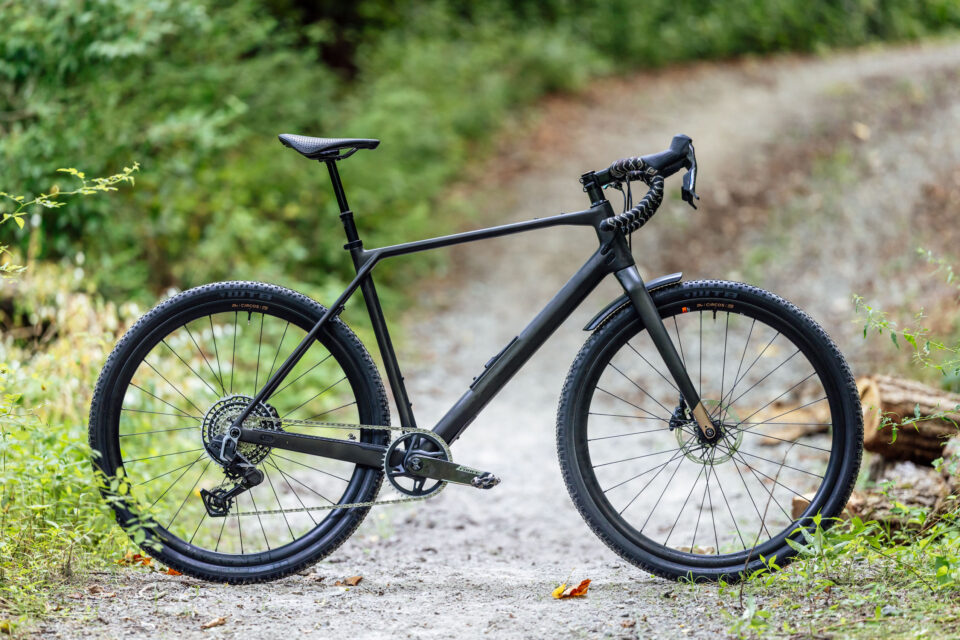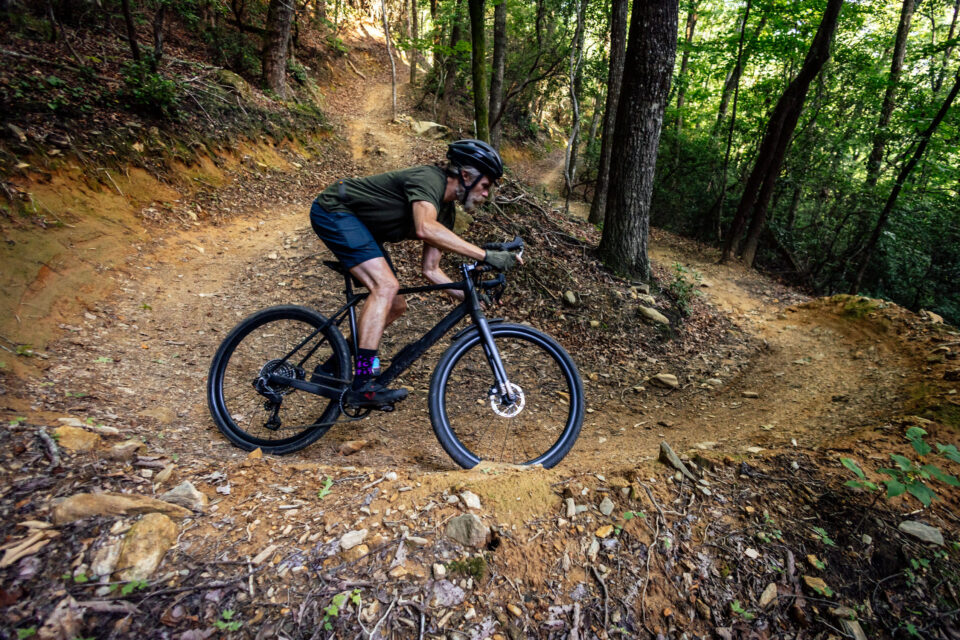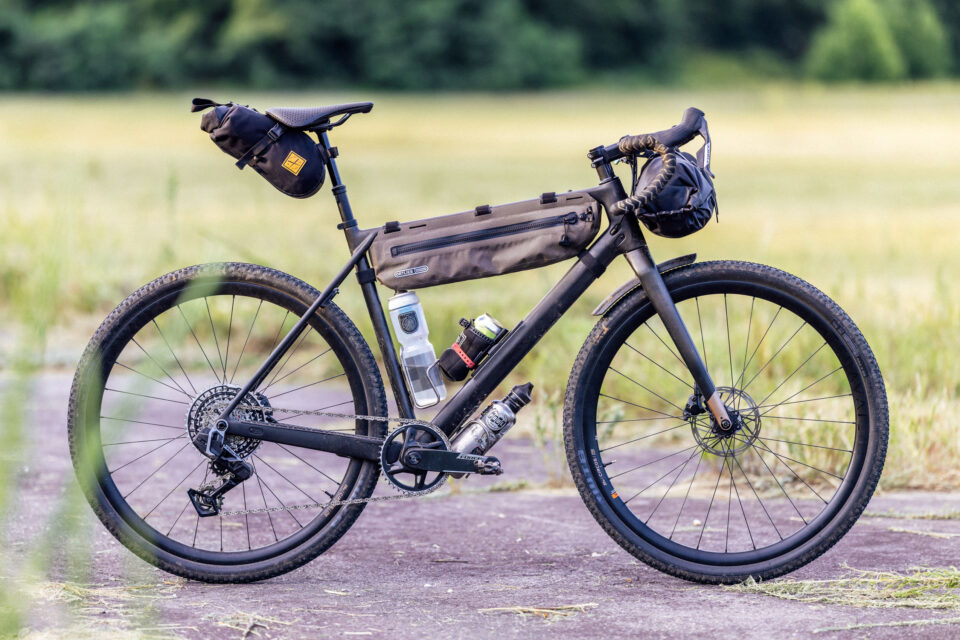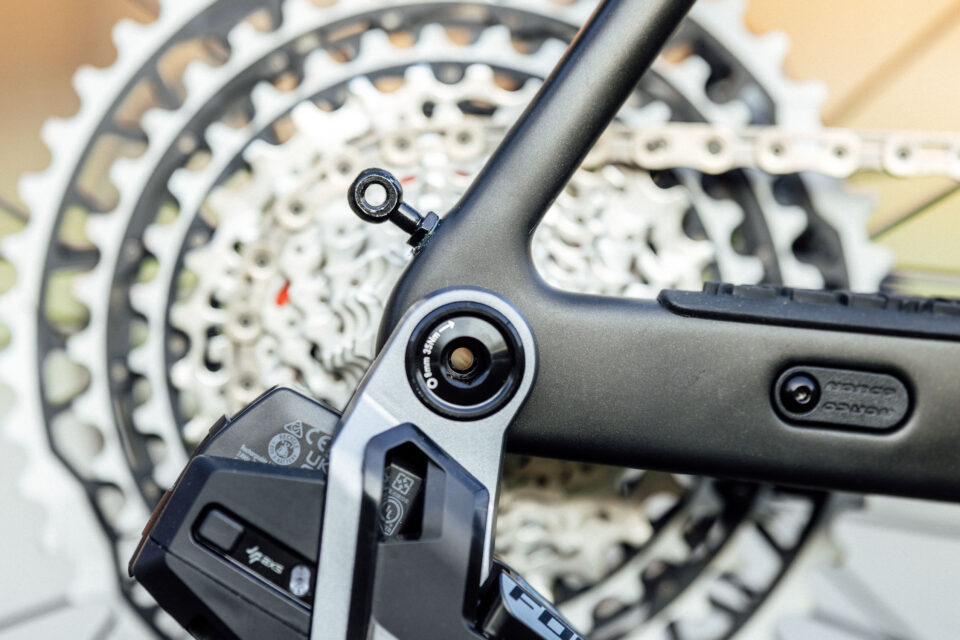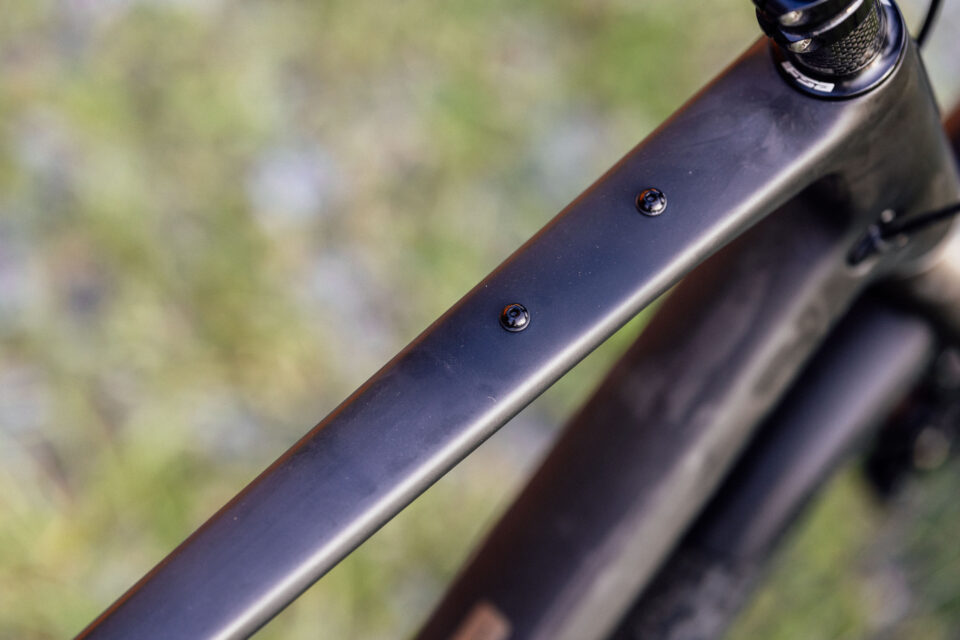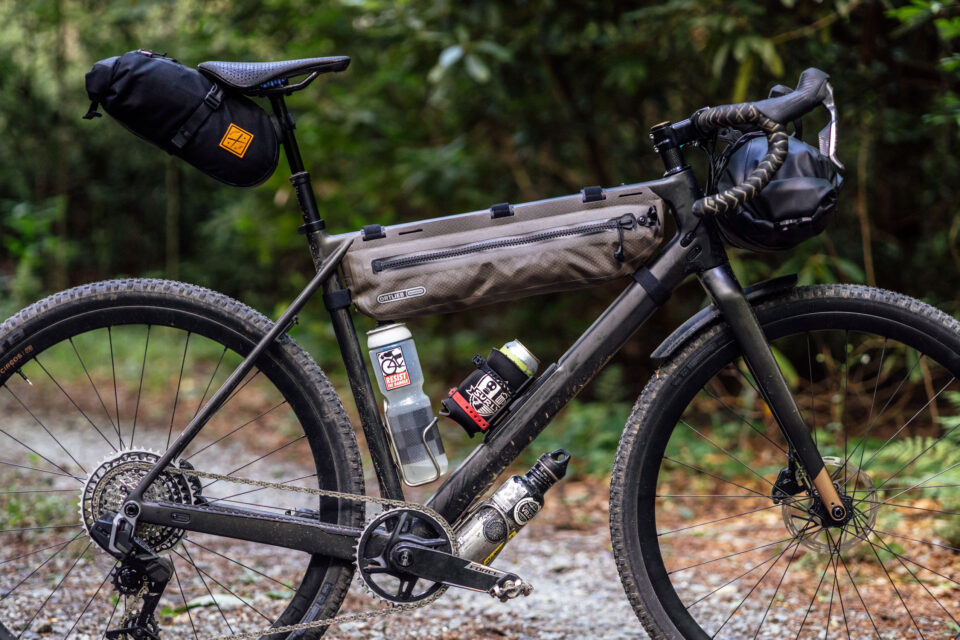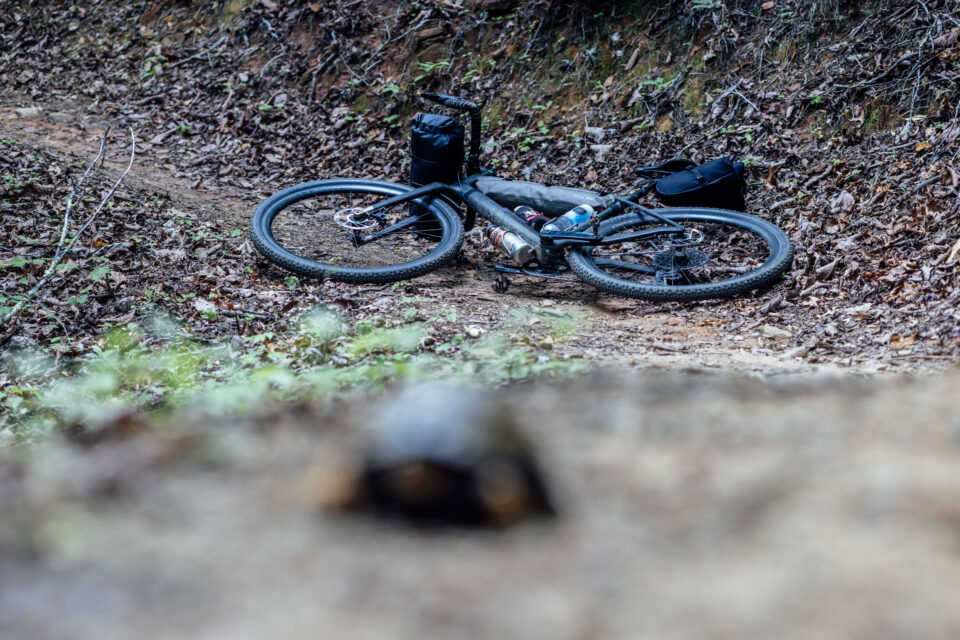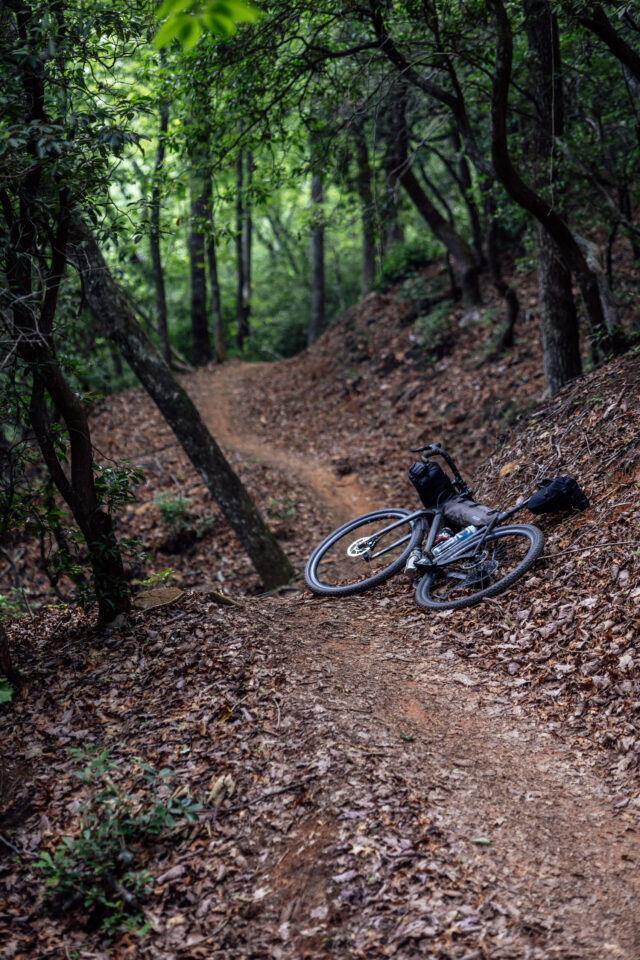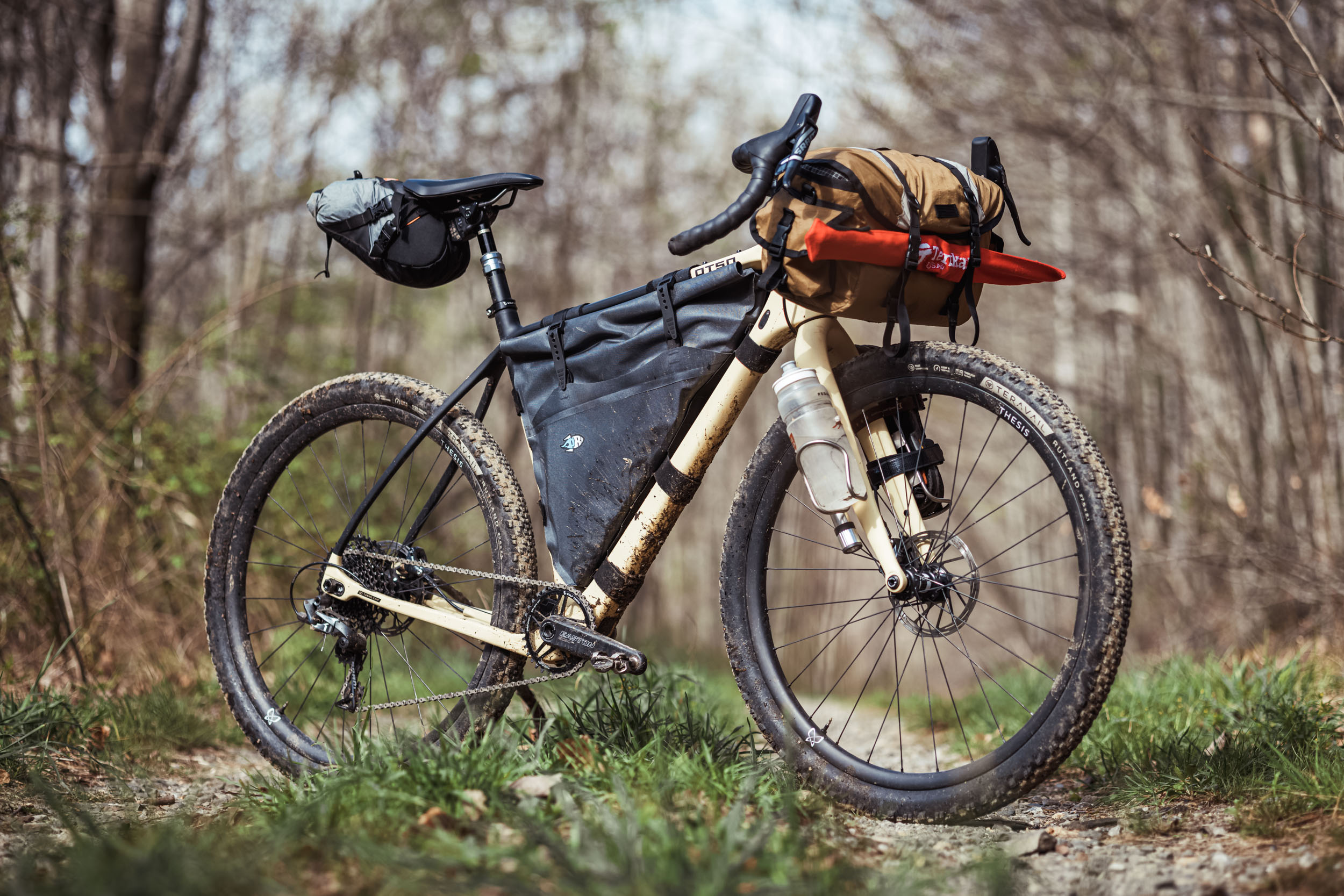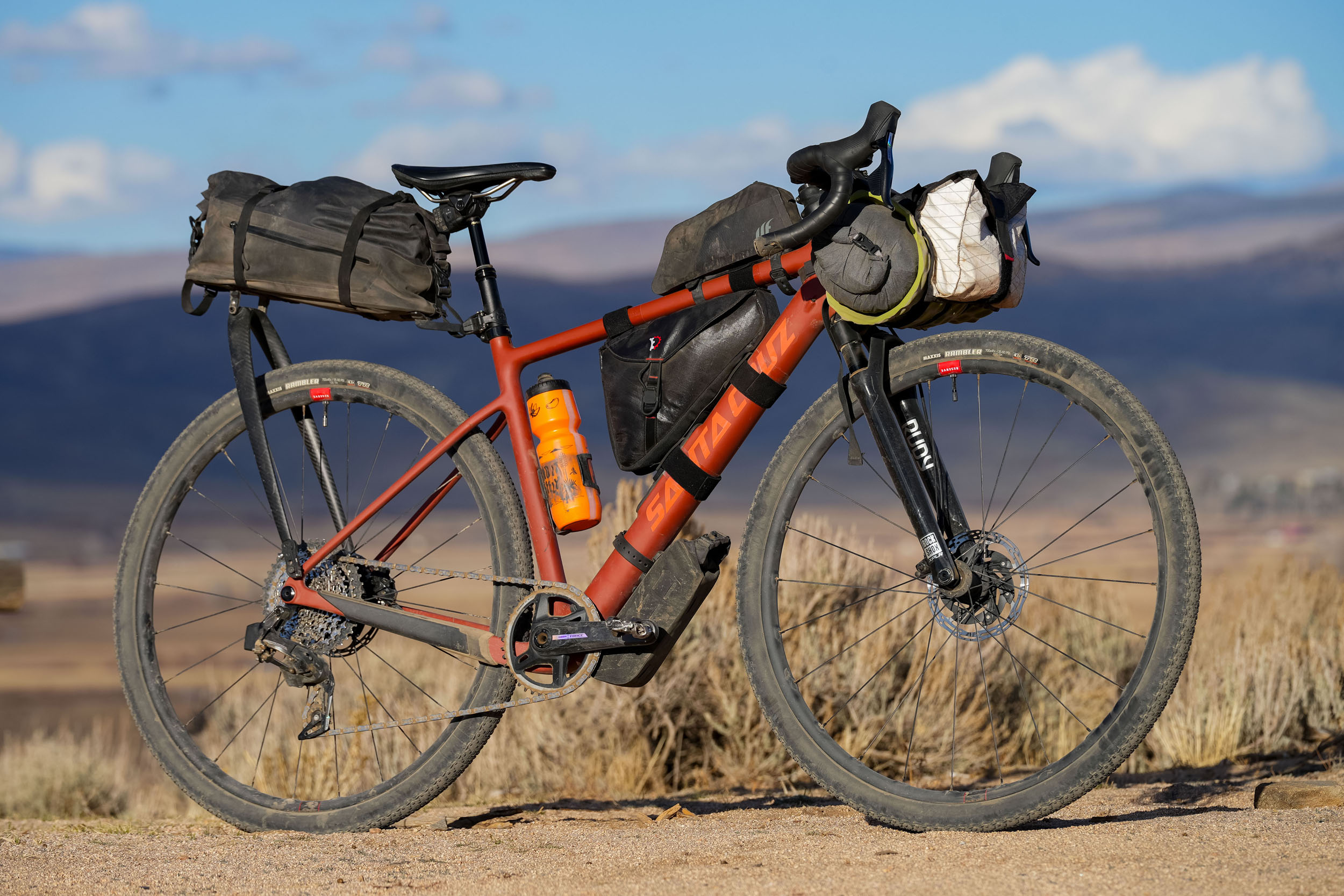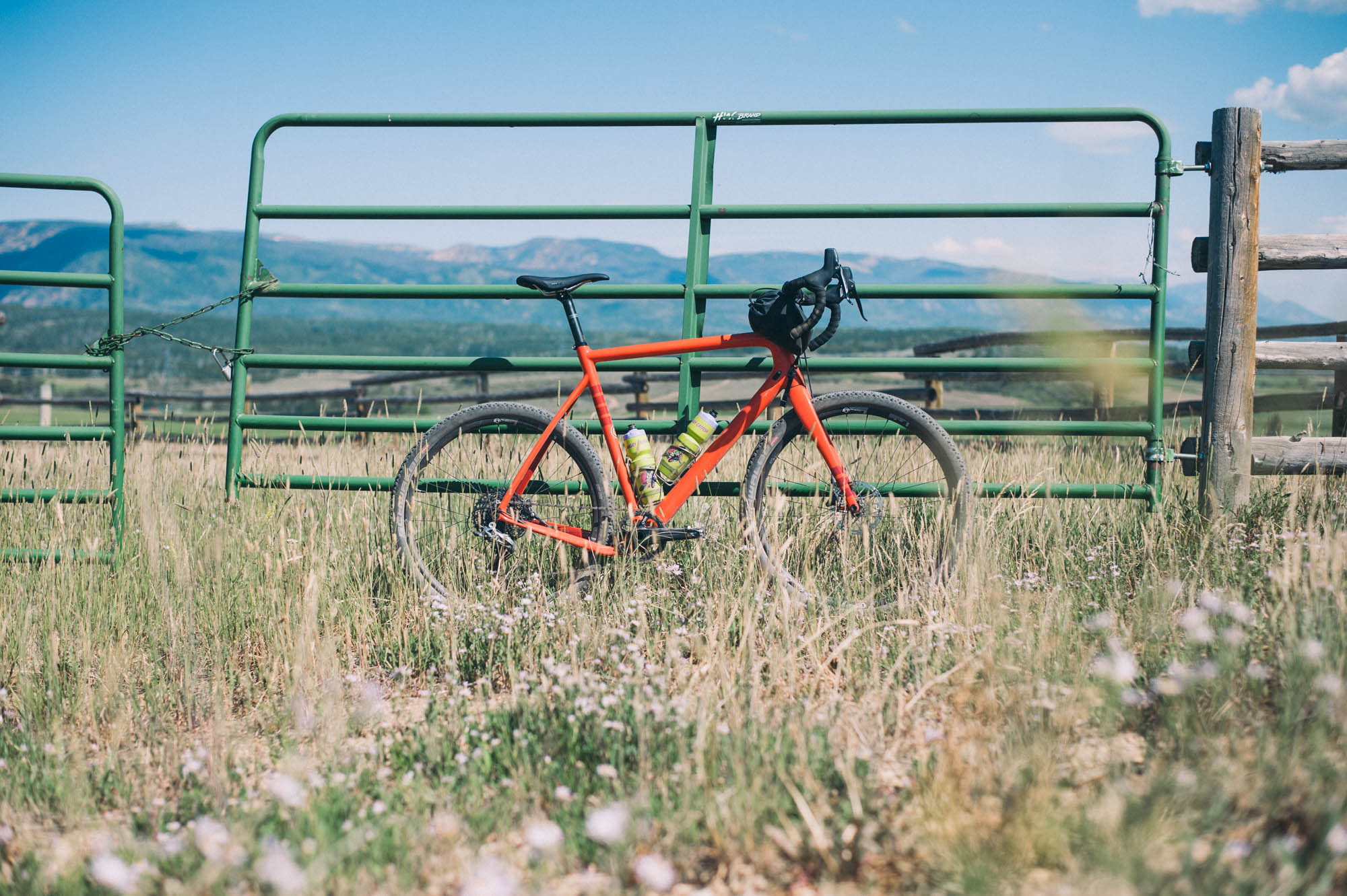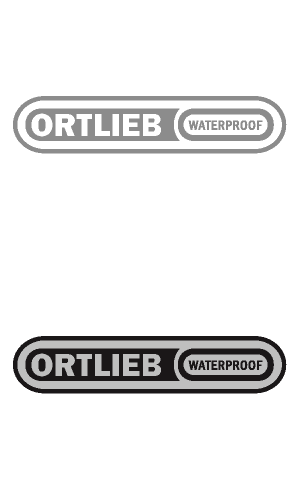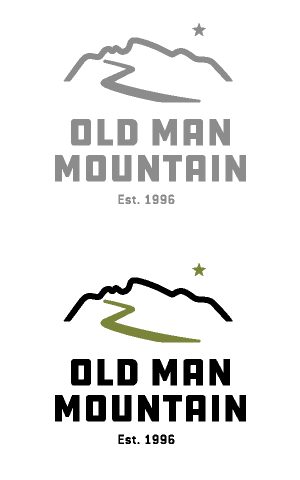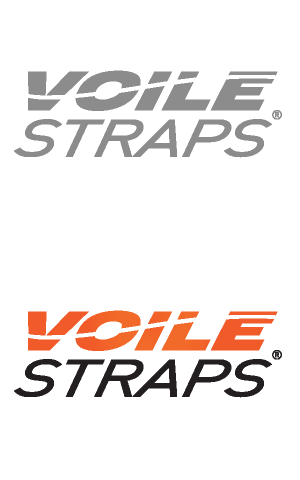Norco Search Review: No Time for Bears
Confident on rough terrain thanks to its mountain bike demeanor but still surprisingly light and snappy, the all-new Norco Search Carbon is a gravel bike with a little extra backbone. Featuring progressive geometry, in-frame storage, an integrated fender, and clearance for larger tires, it’s built for riders who want to move fast and ride a variety of terrain. Find our full review after testing it on everything from smooth gravel to chunky doubletrack, plus an interesting singletrack descent running from a bear…
PUBLISHED Aug 5, 2025
In my recent Stooge MK7 review, I touched on my tendency to stick to familiar ground: namely, steel hardtails and rigid 29+ bikes. To work around these obsessions, I deliberately try to mix it up a couple of times a year with bikes that challenge my preferences and assumptions. Last year, it was breaking out of the steel and titanium mold with a couple of aluminum bikes. For the record, these seemingly left-field decisions aren’t completely forced; there’s usually a reason or two. Maybe it’s an interesting design nuance or something genuinely unique that piques my interest—such as the Specialized Chisel’s innovative uber-light aluminum frame—an opportunity for a comparison to other bikes I’ve reviewed, a particular route or ride I want to try, or in the case of this Norco Search review, all of the above. It’s been some years since I’ve put much time on a carbon gravel bike, but the brand-new Norco Search caught my attention with a few features and a compelling geometry that seemed worth investigating. Read on for a full review after a few months with the Norco Search C that I built from a frameset.
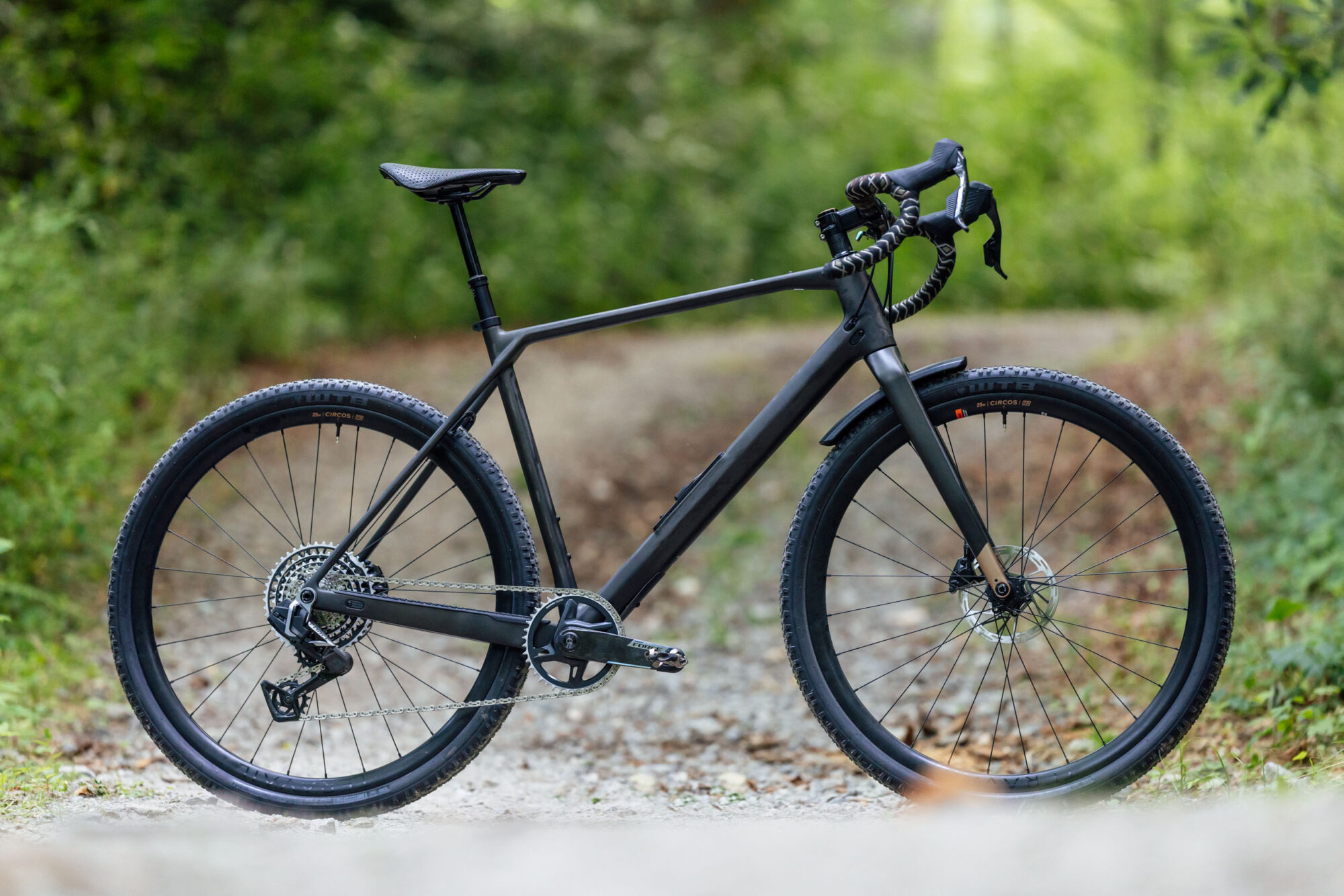
I’ll admit, one impetus behind reviewing this bike is that I wished I had a light and fast carbon gravel bike last fall. I got an 11th-hour entry into Pisgah Monster Cross, one of the O.G. gravel events here in the Southeastern U.S., and I rode it with what I had on hand, my titanium Stargazer. Since I’d only been riding my singlespeed leading into it, my drop-bar bike muscles were atrophied, so to speak, so I went into it untrained with big 2.35” tires. I felt slow, and I was slow. The route follows a roughly 70-mile course with 9,000 feet of climbing on mostly gravel and pavement, with one spicy class IV doubletrack descent tossed in the middle to spice things up. Most people, some friends of mine included, were riding much speedier gravel bikes with smaller tires. Sure, I passed a few people on the one gnarly descent, but I got left in the dust by countless riders on the smooth gravel and pavement. I wasn’t in it to race, but I had a personal goal to finish it pretty quickly. I realized somewhere along the way that I’d be more likely to accomplish that with smaller tires and a different bike—and more training, of course.
Given the wet spring, it was a perfect opportunity to test a bike that fit the bill on the same gravel roads. A lot of rain usually means leaving the mountain bike on the rack and sticking to the piste. With that in mind, I looked around for a newer gravel bike that’s built for speed, but I also wanted something with a relatively progressive geometry to handle the occasional challenging doubletrack descent or stretch of singletrack. After surveying the options, the Norco Search Carbon stood out as one of the few that looked like a good fit, aside from the Santa Cruz Stigmata that Neil already reviewed.
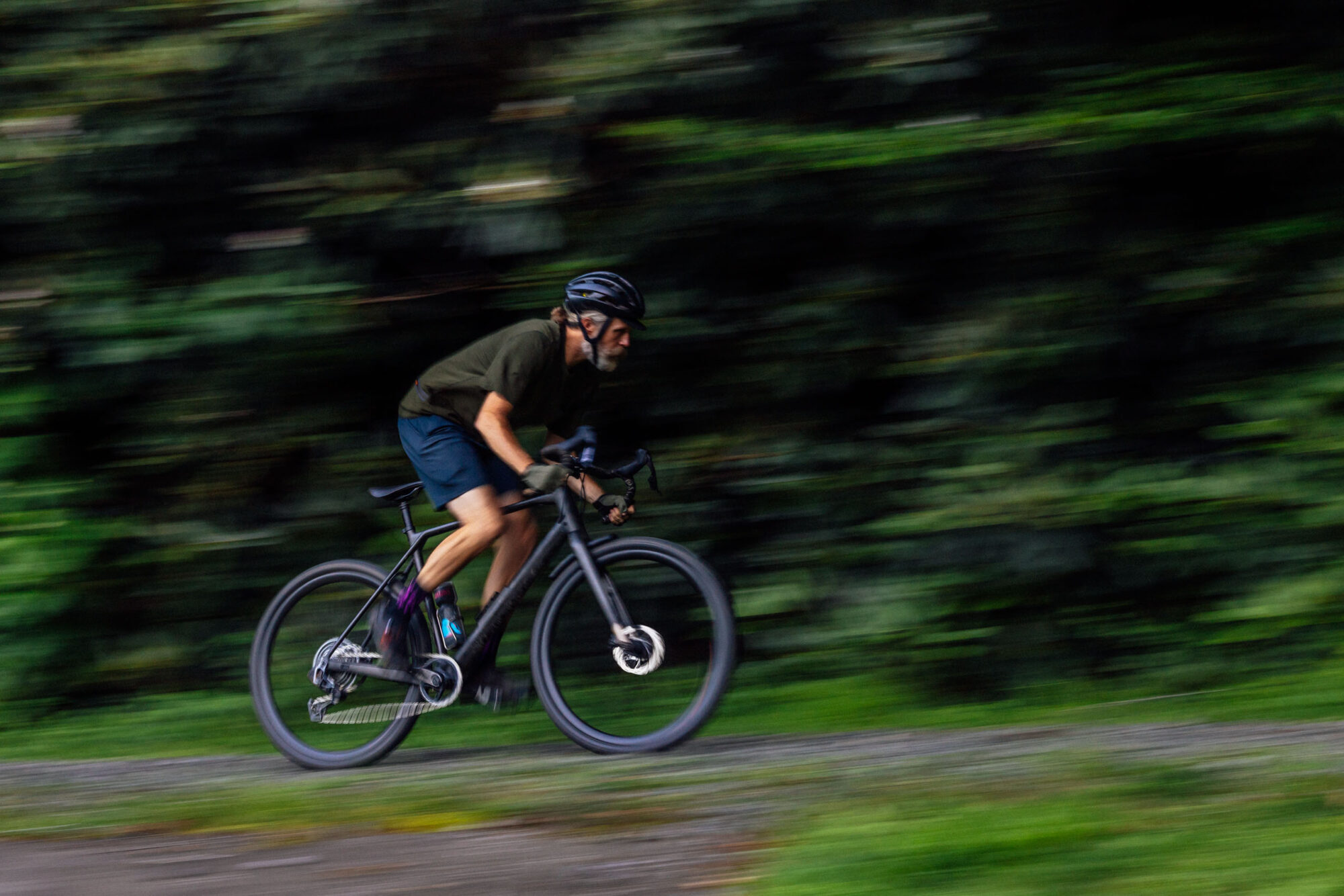
It’s not every day that a carbon gravel bike grabs my attention, but what Norco put together with the all-new Search is genuinely compelling. It’s been a decade since the Canadian brand introduced the original Search, and while there have been a few iterations since—including the 2018 model we reviewed—this latest version feels like a major leap forward. For one, the carbon frame brings some thoughtful bells and whistles, including sleek in-frame storage, a removable integrated front fender, and a nicely executed fender bridge at the seat stay junction. More importantly, though, it ticks a lot of my boxes: a fully threaded BSA bottom bracket, clearance for 50mm tires, UDH/Transmission-compatible dropouts, and, perhaps most notably, a fresh take on gravel geometry with a tall-ish headtube, slack head angle, and long reach.
New Norco Search Geo
| Size | 1 | 2 | 3 | 4 | 5 |
|---|---|---|---|---|---|
| Horizontal TT Length | 539 | 559 | 583 | 608 | 633 |
| Reach | 385 | 400 | 415 | 430 | 445 |
| Wheelbase | 1037 | 1056 | 1082 | 1108 | 1132 |
| CS Length | 425 | 425 | 427.5 | 430 | 430 |
| Effective ST Angle | 74.5 | 74.25 | 74 | 73.75 | 73.50 |
| ST Length | 440 | 475 | 510 | 545 | 580 |
| HT Angle | 69.5 | 69.5 | 69.5 | 69.5 | 69.5 |
| HT Length | 100 | 110 | 135 | 160 | 185 |
| Fork Offset | 51 | 51 | 51 | 51 | 51 |
| BB Drop | 75 | 75 | 75 | 75 | 75 |
| Stack | 554 | 564 | 587 | 611 | 634 |
| Rider Height | 5’1″-5’5″ | 5’4″-5’8″ | 5’7″-5’11” | 5’10”-6’2″ | 6’1″-6’5″ |
Speaking of fit, the Search’s impressively long front-end may have been the main reason I was specifically drawn to it over other bikes in its category. Over the years, I’ve had many conversations around geometry trends, several of which have been centered on the idea that the front-center of most bikes is simply too short. And this was after the “long reach/short stem” trend ensued. Bikes are still too short. Of course, that doesn’t apply to all styles of bikes and all people, but for me, there’s a lot to be said for the added stability and traction that a longer front-center can provide.
| Bike | Kona Libre G2 (56) | Canyon Grizl (L) | Salsa Warbird (59) | Ibis Hakka MX (58) | Otso Waheela C (L) | Santa Cruz Stigmata (L) | Norco Search C (4) | |
|---|---|---|---|---|---|---|---|---|
| Tire Clearance | 50mm | 54mm | 45mm | 40mm | 54mm | 50mm | 50mm | |
| Head Tube Angle | 70.5 | 71 | 70.75 | 72 | 71.5 | 69.5 | 69.5 | |
| Reach | 400 | 420 | 400 | 392 | 395 | 420 | 430 | |
| Stack | 620 | 619 | 623 | 598 | 595 | 600 | 611 | |
| Chainstay Length | 435 | 440 | 430 | 430 | 420-440 | 430 | 430 | |
| Wheelbase | 1076 | 1100 | 1070 | 1037 | 1039-1059 | 1087 | 1108 |
As you can see in the comparison table above, the Search is very similar to the Stigmata, but slightly longer. The other bike that it reminded me of is the Otso Waheela C that I reviewed a couple years ago.

Norco Search C Build Kit
To summarize the 2025 model lineup, there are eight builds across a wide range of budgets and rider types. The Norco Search C (carbon) models range from $3,200 to $9,500, and the Search A (aluminum) starts at just $999 for the flat-bar build, complete with hydraulic brakes and a 1×11 drivetrain. There are also aluminum models with 2x drivetrains starting at $1,499. The aluminum version has more utility than the Search C frame, with rack bosses and triple mounts on each fork blade, and while it might seem more apt for a review on BIKEPACKING.com, it shares the same geometry as the carbon Search, so hopefully there are dots to be connected.
I decided to get the $2,199 Norco Search carbon frame kit and outfit it with components I had on hand that also needed further testing. That included the new SRAM Force XPLR AXS Transmission and a pair of Teravail Circos wheels. In their current lineup, that’s probably closest to the $4,999 Force XPLR build. Note that the frame kit includes an FSA Integrated Sealed Bearing headset (No. 42), thru-axles, and a Norco seat clamp.
- Frame: Norco Search C, Size 4
- Fork: Norco Search C
- Front Hub: DT350
- Rear Hub: DT350
- Rims: Teravail Circos, 25mm IW
- Spokes: DT Swiss Competition
- Tires: WTB Resolute, 50mm
- Crankset: SRAM Force XPLR, 170mm
- Derailleur: SRAM Force XPLR AXS, 13-speed
- Shifter/Levers: SRAM Force XPLR AXS
- Cassette: SRAM Force XPLR, 10-46t
- Bottom Bracket: SRAM
- Handlebar: Enve G, 460mm
- Tape: Campandgoslow Western Rattler
- Headset: FSA
- Brakes: SRAM Force
- Saddle: Specialized Power with Mirror
- Seatpost: OneUp, 125mm
Highlights of this component list include the Teravail Circos wheels, which were impressively light and stiff. Plus, I loved the new Force XPLR Transmission. It’s quick and precise, and the 13-speed cassette gearing is amazing for this sort of bike. When riding more varied and rough terrain, I found myself having to shift two or three gears at a time in the higher end of the range, but when spinning and pushing the pace on pavement and gravel, these small steps were refreshing. Obviously, I would have preferred a smaller chainring up front, especially when bikepacking with a load, but I made do with the 40T chainring that was specced on the crankset, and it wasn’t that bad once my legs got used to it.
My only real complaint about this build was that I had to mount the dropper lever on the clamp area of the bars, near the stem. I’m not into the thumb levers that get clamped at the drops, and I prefer having the ability to actuate the dropper via the levers, by either pressing both shifter levers simultaneously or using the bonus button on the newest Force levers. However, this wasn’t an option since I wanted at least 125mm of drop, so I opted to use a cable-actuated OneUp I had on hand. For the record, I could have fit a 150 if I had one. That leads me to the one update I was really hoping to see SRAM execute with the new XPLR group: a longer-travel 27.2mm Reverb AXS dropper post. The 50 or 75mm travel options they offer seem silly to me.
Generally, I was pleased with this build. It was ready for all sorts of dirt action with the wide ENVE bars and knobby 50mm WTB Resolute tires. For this type of bike, the tire clearance is decent. Norco caps it at 50mm, and that’s pretty accurate. I wouldn’t try and squeeze anything bigger in the back. However, the front has plenty of space, even with the bolt-in, integrated front fender.
Frame Details
I quite like the low-profile front fender. It’s easy to bolt on or remove if you don’t like the aesthetic. I think it’s pretty tough looking, and it does a great job of controlling the muck and spray coming off of the front tire. It’s a nicely executed original detail that’s part of what I consider a thoughtful frame design.
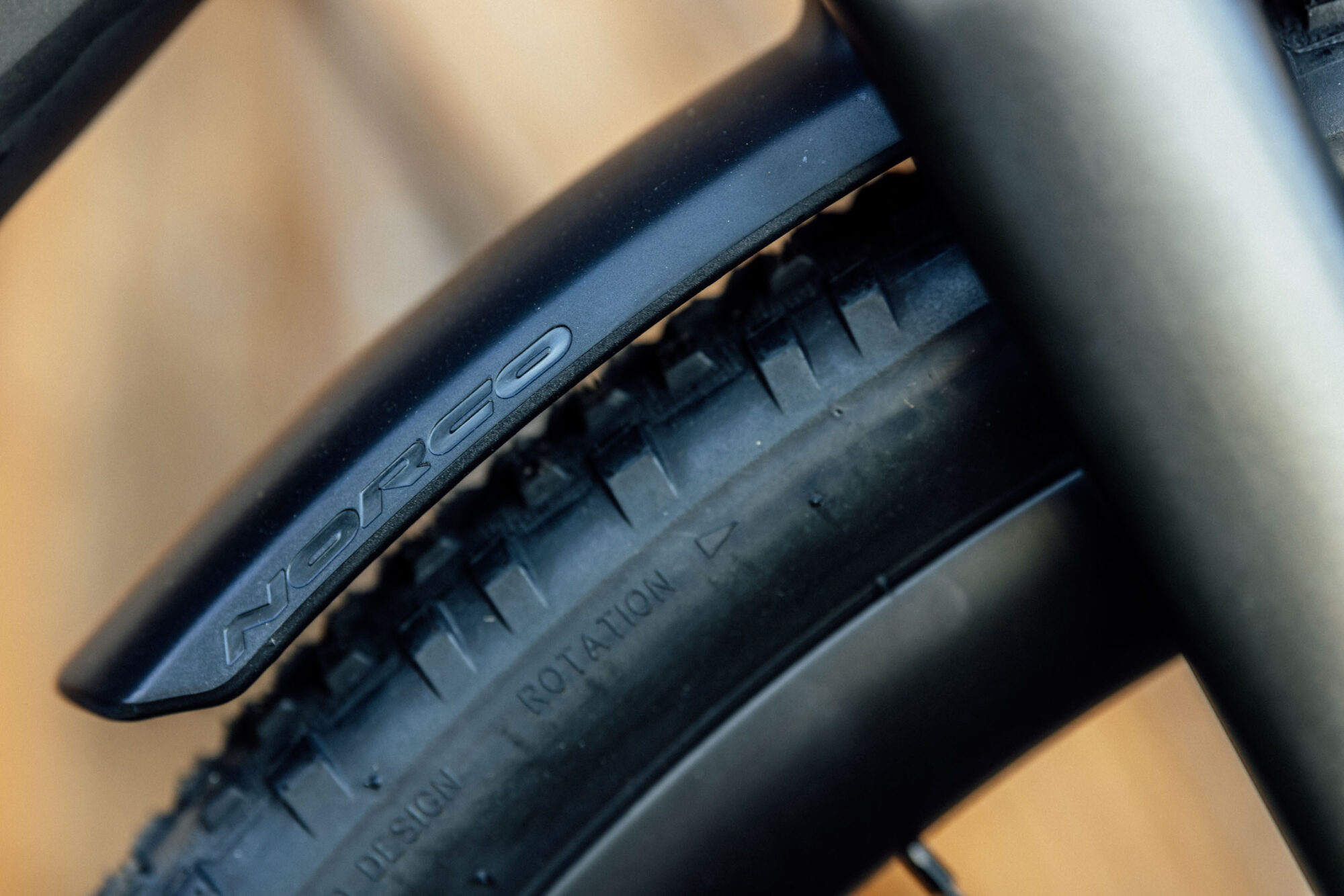
Even more impressive is the internal downtube storage system, which neatly houses two included neoprene storage sleeves, perfect for stashing tools and a pump. Plus, you could squeeze in a spare tube or other essentials you’d normally strap to the frame or carry in a bag. And Norco’s implementation is the best I’ve seen. It uses a CNC-machined aluminum handle that offers an assuring click when engaged, and the entire lid seems to have a perfectly machined tolerance that gives it a solid, airtight-sounding “thunk” when popped into place. This is the first time I’ve had in-frame storage on a gravel bike, and I found it even more useful on day rides than I did on a mountain bike. After all, leaving the frame bag at home reinforces the “fast and light” ethos of such a bike. I wish every bike had this exact system.
The frame also features SRAM’s Universal Derailleur Hanger (UDH), which makes finding a replacement hanger much easier in a pinch. And, obviously, it’s also Transmission-compatible, giving riders the option to run a T-Type drivetrain. The Search Carbon is 1x only, but the aluminum models are 2x compatible, if you prefer a double. Both are built around a reliable threaded BSA bottom bracket—always a welcome sight. You’ll also find internal routing for a dropper post and a detachable bridge and two banjo bolts for mounting a rear fender.

Another detail is that Norco added rubber protective armor in a couple places. There is a thicker, embossed section on the chainstay and a thin layer on the downtube. Both are nice touches, but the section on the downtube started delaminating a little on the sides toward the end of my test period. I have reached out to Norco about this issue, but I’m guessing it will be an easy fix with the right adhesive.
Ride Impressions
When I first jumped on the Search, I wasn’t exactly sure what to expect. Part of me anticipated a slightly dumbed-down version of a gravel race bike. Anytime “longer” and “slacker” are part of the marketing spiel, there are red flags. However, I was impressed from the start by how fast and efficient the Search felt. I wouldn’t say it’s a bullet compared to other race-specific bikes, but it doesn’t feel like a slouch by any stretch of the imagination, even with the relatively sluggish WTB Resolute tires. Throw some semi-slicks on, and I don’t think it would have any problem hanging with any other gravel bike.
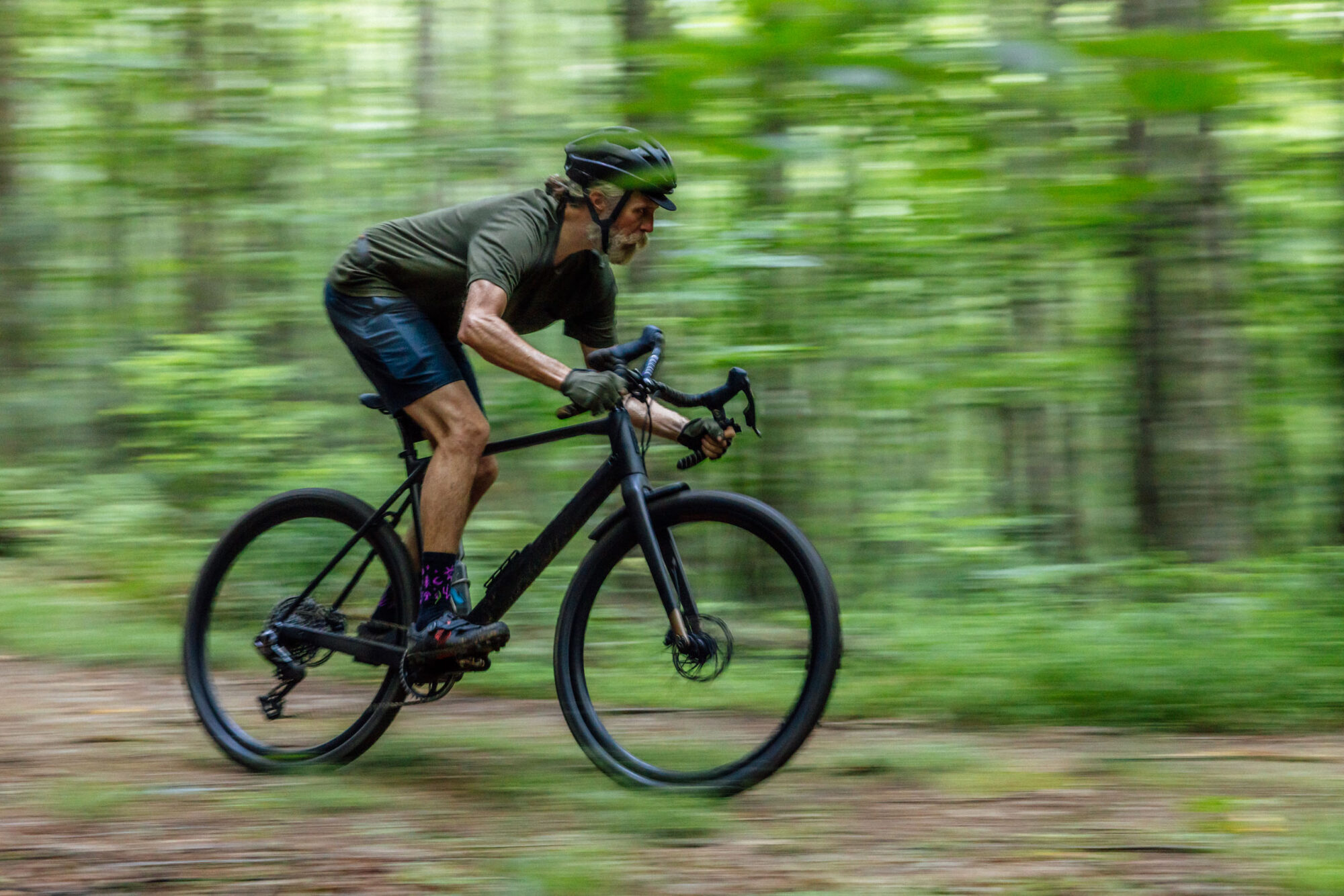
As mentioned earlier, this bike is long. It fit well from the very beginning, although I had a 70mm stem at first and ended up changing to a 60, giving it even more of a mountain bike demeanor, which I appreciated. The long cockpit also yields a semi-aggressive stance that makes the Search feel like it wants to go fast, all the time, both up and down. Despite its lengthy poise, I never felt like the Search was slow to handle or turn. It still feels quick and nimble, and the wheelbase provides a ton of traction for cornering, descending, and climbing.
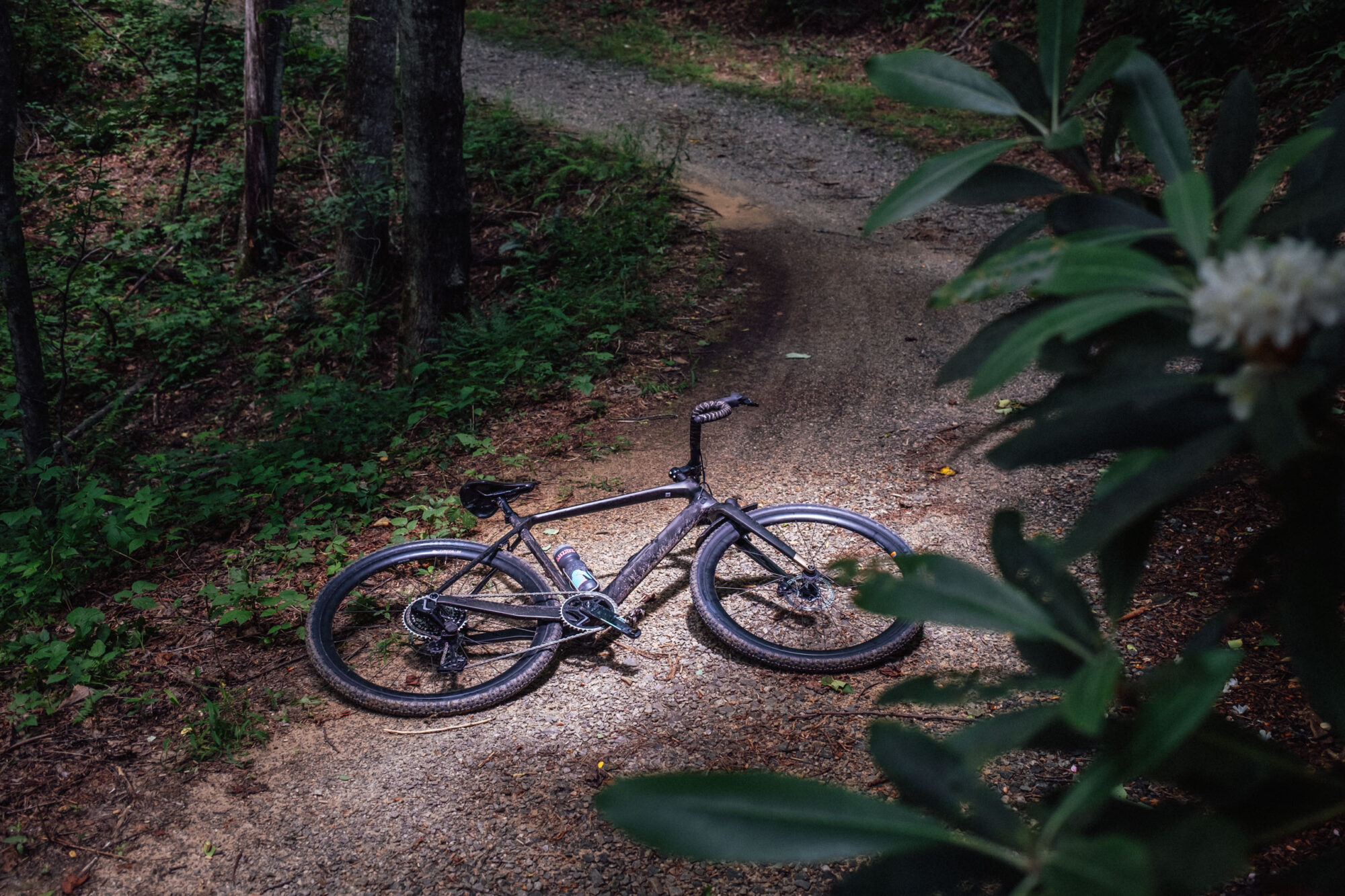
That length also translates to an exceptional level of confidence for a sub-two-inch-tired gravel bike. I found myself pointing down gravel roads and doubletrack and just letting it go. That extra wheelbase and front-center keep it stable and add that little extra traction to erase any annoying worries that pop up when railing down chunky descents. Same goes for the slightly slacker-than-normal head tube angle (for a gravel race bike) that doesn’t feel like it’s going to fold up when charging down rutted doubletrack. It’s comfortable over a wide spectrum of terrain, which brings to mind the variety of mixed “gravel” surfaces on any given route.
I’d probably describe the frame feel of the Search as fairly average, with the rear being a tad more lively and plush than the front. I don’t consider the fork to be overly harsh, but it feels like most of the stiff carbon gravel forks I’ve tried.

Out Bikepacking
Adding weight to the frame, it felt a little more forgiving, as most bikes tend to do. But I’d also argue that the frame isn’t designed to handle heavy loads. It felt great with a comparably light bikepacking-style bag setup, but I could tell that the rear end might get a little squirrely with a heavy rack and pannier system. That being said, I initially mistook the included, optional banjo-style fender mount bolts for rack mounts; turns out this bike isn’t built to support the weight of a full touring setup. Still, if Norco wanted to push the Search further into true adventure bike territory, dedicated rear rack mounts would be a worthy addition. That said, if you need to run a rack, aftermarket options like those from Old Man Mountain and the Robert Axle Project, Tailfin, and now the Ortlieb Quick Rack XL make it possible to mount one using the thru-axle area. The Search might not be a rugged touring rig, but it’s certainly rack-capable for lighter loads.
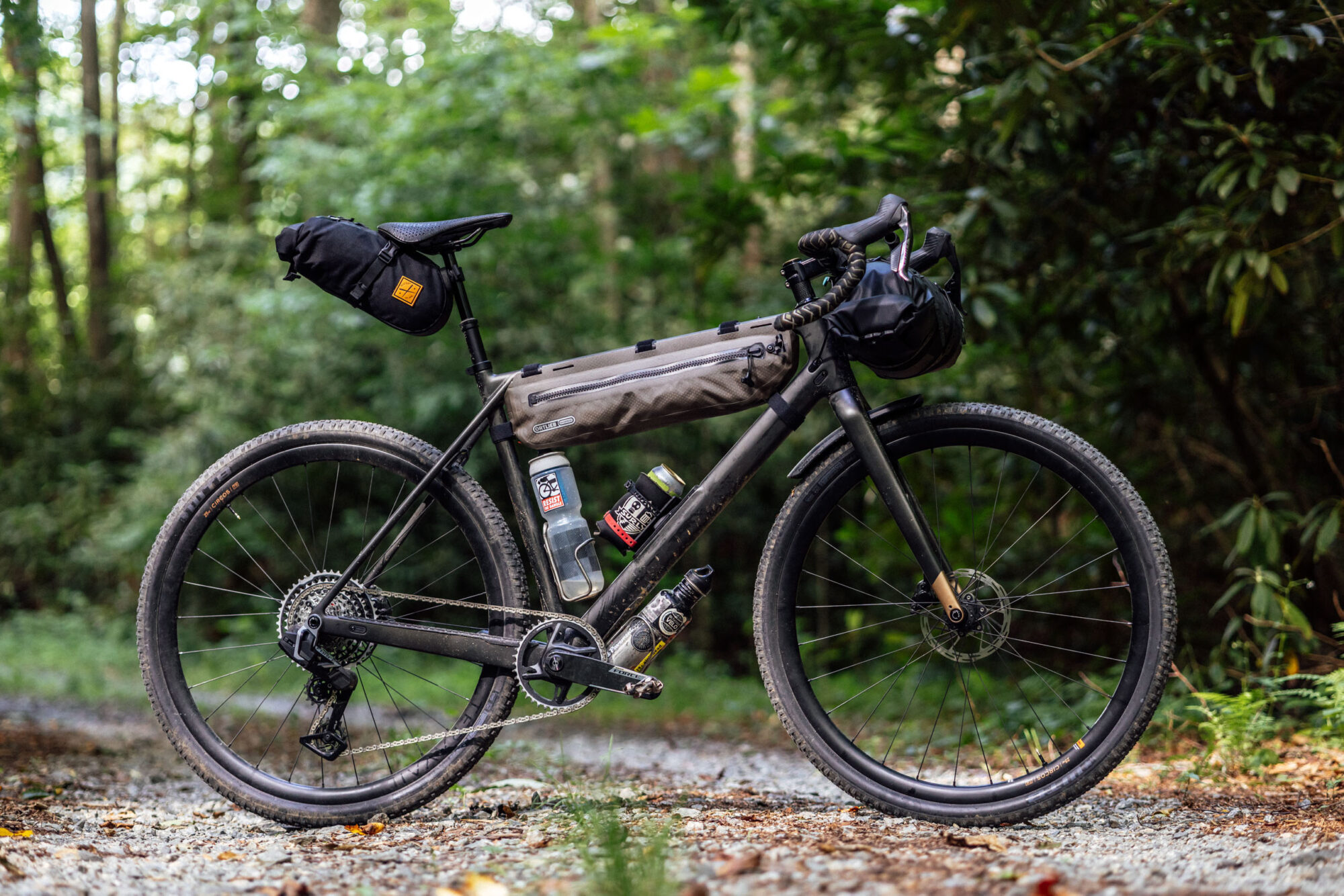
The Norco Search carbon frame doesn’t have a ton of bikepacking-specific features, but I’d argue that it has plenty for its intent. It has two dedicated bottle mounts inside the frame triangle on all sizes, a pair on the underside of the downtube, and provisions for a cage or bolt-on top tube bag up top.
Forced Feeding
One afternoon, I decided to take the Search out on a sub-24-hour overnighter. After pedaling up to the spot I had in mind, about a two-hour climb from my house, I set up camp, prepared and scarfed down dinner, and proceeded to relax in my camp chair, listening to a podcast. Despite having my earbuds blaring, I heard limbs and twigs snapping behind me. I spun around to lock eyes with a medium-sized black bear as he was walking straight toward me. I rushed to the other side of my small one-person tent to put something between the two of us and started yelling. He didn’t seem scared, but he backed off his advance a little and moseyed to the other side of the ridge. He got behind a tree and watched me. Then he approached again. I started throwing sticks at him while yelling strings of my favorite profanities, and he went back over the ridge and began circling. I decided to pack up as the last light of dusk was fading, all the while yelling and occasionally chucking sticks in his general direction. He was clearly hungry. The bears around Pisgah National Forest are being more aggressive this year, likely due to a food shortage. Some people say it’s a bad berry year, but I think there’s probably something bigger at work that’s the aftermath of Hurricane Helene’s devastation. One theory is that—as sad as it is—it’s because there was no bear hunting season.
Back to the subject at hand, once I got the bike loaded, I said a few more words to mister bear and pedaled off, climbing up and over from where I was camped to Bracken Mountain, a roughly four-mile descent that drops some 1,200 feet on fast singletrack with scattered roots, rocks, and a lot of twists and turns. I’ve descended it on a drop-bar bike before, but it’s a mountain bike trail through and through. To make it even more challenging, I hadn’t planned on riding at night, so all I had was a small headlamp with not much battery life left. Dropping that trail with very little to light my way made me realize how confident the Norco Search is. It remained composed and shrugged off unexpected roots and hits without sending me scared, and got me home in one piece. Perhaps the rush of adrenaline played a role, but I think this speaks to the additional grit that the Search has under the hood.
- Model/Size Tested: Norco Search C, Size 4
- Actual Weight: 1.95 kg (4.31 pounds)
- Place of Manufacture: Taiwan
- Price: $2,199
- Manufacturer’s Details: Norco
Pros
- Geometry balances fast and light with stability
- Long front-center and short stem gives it mountain bike vibes, but it’s still quick and nimble
- Very confident descender for this style of bike
- Excellent traction in the corners and climbing
- Thoughtfully designed frame with clever features like the integrated front fender
- In-frame storage is even better for gravel bikes!
- Comfortable on all forms of gravel, from chunky doubletrack to the smooth stuff
Cons
- More mounts would be nice, such as options for a small front/rando-style rack
- A little more tire clearance would be welcome (52mm + room for mud would be a great option for this bike)
- Rubber downtube protector started delaminating
- 27.2mm seatpost spec is limiting
Wrap Up
After a few months of riding and testing, the Norco Search Carbon left a strong impression as a snappy, capable, and thoughtfully designed gravel bike that blends modern race-ready performance with just enough utility to stretch into more adventurous territory. Its progressive geometry—with a notably long front-center and slack head angle—offers the kind of confidence and stability that open up a wide range of terrain, from smooth gravel to chunky doubletrack descents. It’s rare for a carbon gravel bike to feel this planted and controlled, and I appreciated the extra mountain bike-esque vibe it brought to the table without compromising efficiency. Add in smart frame details like the perfectly executed internal downtube storage and clever bolt-on fender, and it’s clear that Norco didn’t just design the Search for race day. It’s for real-world gravel riding in all its mixed and messy glory.
That said, the Norco Search C doesn’t try to be everything. It’s not a full-on bikepacking or touring rig—at least not without some mindful minimalism and aftermarket hardware—but it strikes a nice balance for riders who prioritize speed and handling while still wanting the flexibility to carry some gear. Paired with a solid build like the one I put together, it’s a bike that feels quick and composed whether you’re riding unloaded on familiar gravel loops or heading into bear territory with a light overnighter setup. For folks who like to blur the lines between fast gravel riding and the occasional singletrack shortcut, the Norco Search Carbon might be one of the more compelling options out there right now.
P.S. If anyone has any experience with the aluminum Search, I’d love to hear your thoughts in the conversation below.
Further Reading
Make sure to dig into these related articles for more info...
Please keep the conversation civil, constructive, and inclusive, or your comment will be removed.
